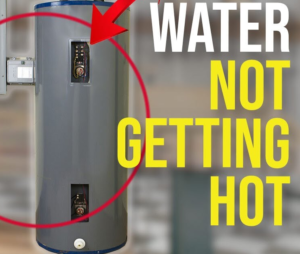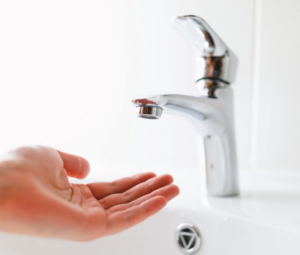A leaking garbage disposal can be a frustrating problem that homeowners frequently encounter. Left untreated, it can cause water damage to your cabinets, floor, and surrounding areas. While calling a plumber is always an option, many leaks can be fixed without professional assistance. In this article, we’ll guide you through a step-by-step process to diagnose and fix common garbage disposal leaks, saving you time and money.
Understanding the Anatomy of a Garbage Disposal
Before diving into how to fix a leaking garbage disposal, it’s important to understand its basic structure. A garbage disposal unit is typically mounted under the kitchen sink and connected to the sink drain and the plumbing. The main components include:
- Mounting flange: Connects the disposal unit to the sink drain.
- Discharge pipe: Transfers waste from the disposal to the sewer system.
- Dishwasher inlet hose: Connects to the dishwasher for draining.
- Unit body: Houses the motor, blades, and electrical connections.
Leaks can occur in any of these parts, which is why identifying the source of the problem is the first crucial step.
Step 1: Safety First
Before you begin any repairs, ensure your safety by disconnecting the power supply to the garbage disposal. The safest approach is to unplug the unit from the electrical outlet beneath the sink. If it’s hardwired, turn off the breaker switch in your electrical panel to prevent accidental electric shock.
Once you’re sure the power is off, inspect the unit visually for water damage or signs of leakage. Having a flashlight handy can help you see tight corners or hard-to-reach areas.
Step 2: Identify the Source of the Leak
Not all leaks are created equal. Determining where the leak originates is key to fixing the problem effectively. Here’s a quick overview of the most common leak points:
1. Leak from the Sink Flange
The sink flange, or the top part of the disposal unit where it meets the sink drain, is a common source of leaks. Over time, the seal between the flange and the sink can degrade, leading to water seeping through.
2. Leak from the Dishwasher Connection
Many garbage disposals are connected to a dishwasher. A leak could be originating from the small rubber hose that connects the dishwasher to the disposal unit. If the hose or the clamp securing it is loose, worn, or damaged, water may leak from this area.
3. Leak from the Discharge Pipe
The discharge pipe is responsible for carrying water and waste from the disposal unit to the sewer system. A loose connection or worn gasket where the pipe connects to the disposal can result in a leak.
4. Leak from the Bottom of the Disposal Unit
If water is leaking from the bottom of the disposal, this may indicate an internal seal failure. Unfortunately, this is often a sign that the unit is aging, and repairs may require replacing the entire disposal.
Step 3: Fix the Leak Based on the Source
Now that you have identified the source of the leak, it’s time to fix the problem. Follow the specific instructions below depending on where your leak is located.
Fixing a Leak at the Sink Flange
If the leak is coming from the sink flange, you’ll need to reseal the flange. Here’s how:
- Turn off the water supply and ensure the disposal is disconnected from the power.
- Loosen the screws or mounting ring holding the disposal unit to the sink flange, allowing you to remove the disposal unit.
- Once removed, you can unscrew the mounting flange from the sink drain.
- Clean the flange and the sink’s drain area of any old plumber’s putty or debris.
- Apply a fresh layer of plumber’s putty around the underside of the flange and reseat it into the sink’s drain.
- Reattach the disposal unit and tighten the screws or mounting ring. Ensure everything is secure, then turn the power back on and check for leaks.
Fixing a Leak at the Dishwasher Connection
For leaks originating from the dishwasher inlet hose, follow these steps:
- Inspect the hose clamp that secures the dishwasher hose to the garbage disposal. Tighten it if it’s loose, or replace the clamp if it’s damaged.
- If the hose itself is cracked or worn out, it will need to be replaced. You can find replacement hoses at most hardware stores.
- Remove the old hose, attach the new hose, and secure it tightly with a new clamp. Ensure the connection is secure, then check for leaks after turning the water back on.
Fixing a Leak at the Discharge Pipe
If the leak is coming from the discharge pipe, you may have a loose connection or a bad gasket.
- Check the bolts securing the discharge pipe to the disposal unit and tighten them if they are loose.
- If tightening doesn’t fix the leak, the gasket inside the pipe may be worn. Turn off the water, disconnect the pipe, and inspect the gasket.
- Replace the old gasket with a new one, reattach the pipe, and tighten the bolts securely. Turn the water back on and check if the leak has been fixed.
Fixing a Leak from the Bottom of the Disposal
Leaks from the bottom of the unit indicate internal issues, likely due to a failed internal seal. Unfortunately, there’s no easy way to repair a leak from the bottom, as it usually means the motor seal has failed or the disposal has rusted internally.
In this case, the best course of action is to replace the entire garbage disposal unit. Follow the manufacturer’s instructions for installation, or hire a professional plumber if you’re uncomfortable doing it yourself.
Step 4: Prevent Future Leaks
Once you’ve successfully repaired the leak, it’s a good idea to take steps to prevent future problems:
- Regularly check for leaks around the disposal unit, especially under the sink, where water damage can go unnoticed.
- Be mindful of what you put down the garbage disposal. Avoid grinding hard objects like bones or fibrous vegetables, which can damage the blades and motor over time.
- Run cold water while using the disposal to help flush out debris and prevent clogs.
- Periodically check and tighten any loose connections or hoses to ensure they remain secure.
When to Call a Professional
While many leaks can be fixed with basic tools and a little know-how, there are times when calling a plumber is the best option:
- If you’re uncomfortable working with plumbing or electrical components.
- If the leak persists after attempting repairs.
- If the disposal unit is old and needs replacement.
A professional can not only help with repairs but can also offer advice on whether your garbage disposal is nearing the end of its life and needs replacement.
Conclusion
Fixing a leaking garbage disposal is often a straightforward task that most homeowners can handle with a little time and effort. By identifying the source of the leak, following the appropriate steps, and ensuring everything is properly sealed, you can prevent water damage and extend the life of your garbage disposal. However, if you’re ever in doubt or if the leak continues after your repair attempts, don’t hesitate to reach out to a professional plumber for assistance.
FAQ
- What are the common causes of a leaking garbage disposal?
The most common causes of garbage disposal leaks include loose connections, worn-out seals, cracks in the unit, and damaged pipes. - How can I tell where the leak in my garbage disposal is coming from?
Leaks typically occur from three main areas: the sink flange (top), the hose connections (side), and the bottom of the unit. By inspecting each area carefully, you can determine the source of the leak. - What tools do I need to fix a leaking garbage disposal?
Basic tools include a wrench, pliers, screwdriver, plumber’s putty, and a replacement gasket or seal, depending on the source of the leak. - Can I fix a leaking garbage disposal myself, or do I need a plumber?
Many small leaks can be fixed with basic DIY skills, but if the unit is cracked or you’re unable to locate the source of the leak, it’s best to consult a professional plumber. - How do I fix a leak at the sink flange of my garbage disposal?
If the leak is at the sink flange, you will need to reseal the flange using plumber’s putty and ensure the mounting bolts are securely tightened. - What should I do if the garbage disposal is leaking from the side?
A side leak often indicates a loose or damaged hose connection. Tightening the hose clamps or replacing worn-out hoses can solve the problem. - What does it mean if my garbage disposal is leaking from the bottom?
A bottom leak could mean that internal seals are damaged or that the disposal unit itself is cracked. This often requires a replacement of the unit. - How can I prevent my garbage disposal from leaking in the future?
Regular maintenance, such as checking hose connections and avoiding overloading the disposal, can prevent future leaks. - Is it normal for a garbage disposal to leak over time?
While a garbage disposal can last many years, wear and tear from regular use can lead to leaks as seals and parts degrade. - When should I replace my garbage disposal instead of repairing it?
If the unit is over 8-10 years old, or if it’s leaking from multiple areas or has major cracks, it’s usually more cost-effective to replace the disposal.





